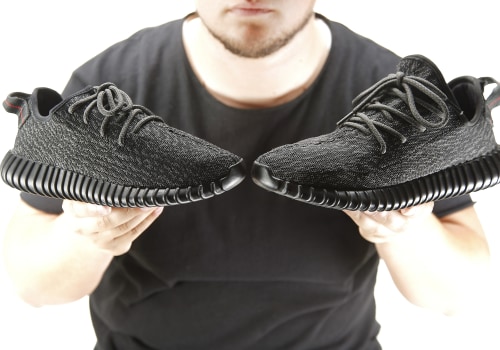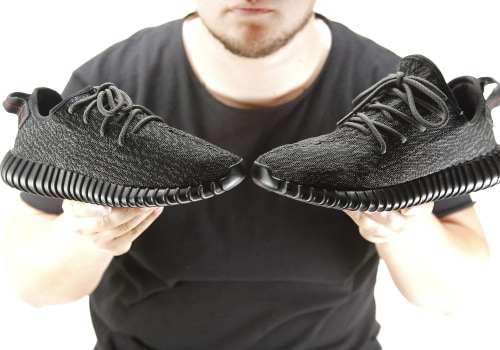Do you want to save money while still getting the look and feel of your favorite designer goods? Buying replicas of designer originals may be the way to go. Replicas are products that are made to look like designer originals, but are made with cheaper materials and production costs. In this article, we'll explore the cost savings of buying replicas over originals, and what you should consider when making a purchase. Designer goods can be expensive, and it's not always easy for everyone to afford them. Replicas provide an alternative that is much more affordable.
They look and feel almost the same as the original, but come with a much lower price tag. This allows those who want to experience the look and feel of designer goods the opportunity to do so at a fraction of the cost. But there are a few things to consider before you buy replicas. Quality can vary greatly, so it's important to do your research and make sure you are getting the best value for your money. When looking at the cost savings of buying replicas over originals, there are a few factors to consider. First, it’s important to determine the quality of the replica and compare it to the original.
Replicas can range from near-perfect copies to ones that are noticeably lower quality. When evaluating the quality of the replica, it’s important to consider the materials used, the craftsmanship, and any differences in design or features. Next, it’s important to look at the price difference between the replica and the original. While replicas are often cheaper than originals, this isn’t always the case. It’s important to compare prices between both options and make sure you’re getting a good deal.
Additionally, it’s also important to factor in the cost of shipping, taxes, and any additional fees when considering which option is more economical. Finally, it’s important to look at the long-term value of each option. While replicas may be cheaper in the short term, they may not hold up as well over time as originals. This is especially true for items like furniture or electronics that may require additional maintenance or repairs over time. When deciding between buying a replica or an original, it’s important to take all these factors into consideration. Overall, there can be great cost savings when buying a replica instead of an original, but it’s important to be aware of the differences in quality and long-term value before making your decision.
Comparing Prices
When evaluating cost savings, it’s important to look at the price difference between the replica and the original.Replicas are often much cheaper than the original item, but that doesn’t necessarily make them the better option. It is important to compare the prices of both items in order to determine which one is more cost effective for you. When comparing prices, it is important to consider the quality of the replica. If you are looking for a high quality replica, you may have to pay more than you would for an original item.
However, if you are looking for a low-cost alternative, you may be able to find replicas that are much cheaper than the original item. It is also important to look at the availability of the replica. Some replicas may not be as widely available as the original item, which could lead to higher prices or longer waiting times. Additionally, replicas may not always be in stock when you need them, so it’s important to research availability before making a purchase.
Finally, it is important to compare the features of the replica with those of the original item. Replicas may not always have all of the same features or capabilities as the original item. For example, if you are looking for a laptop, a replica may not have all of the same capabilities as the original model. It is important to research the features of both items before making a decision.
Evaluating Quality
When looking at the cost savings of buying replicas over originals, it’s important to evaluate the quality of the replica and compare it to the original. The quality of a replica is typically not as high as an original, but it can still be quite good if you know what to look for. Quality control is one of the most important aspects when evaluating a replica, so it is important to look for a product with a good reputation and a manufacturer with experience in the field. When looking at the quality of a replica, it is important to consider the materials used in its construction.The more durable the material, the more likely it is to last longer and retain its value over time. Look for metal and plastic components as these are often more durable than other materials. Additionally, look for signs of wear and tear on the product, as this can be an indication of poor quality. The design of the replica should also be taken into account when evaluating quality.
Look for signs of craftsmanship such as intricate detailing or smooth edges. Poorly made replicas may have parts that don’t fit together properly or pieces that are misshapen. It is also important to consider any additional features that come with the replica, such as lights, sound effects, or other interactive elements. Finally, it is important to consider customer reviews when evaluating quality.
Look for reviews that talk about product longevity and overall satisfaction with the product. If there are a lot of negative reviews, it may be best to avoid that particular replica and look for another option.
Considering Long-Term Value
When weighing the cost savings of buying replicas over originals, it's important to look beyond the initial purchase price. When looking at the long-term value of each option, there are several factors to consider.Durability:
In many cases, replicas are made with cheaper materials and lower quality construction than originals.This means that while a replica may initially be more affordable than an original, it may not last as long. If you plan on using the item frequently or over a long period of time, this should be taken into account when deciding whether a replica or an original is the better option.
Resale Value:
When looking at long-term value, it's also important to consider resale value. Originals tend to hold their value better than replicas, which can be difficult to resell. If you think you might need to resell your item in the future, an original may be the better option.Repairability:
Another factor to consider when looking at long-term value is repairability.Replicas often have limited parts availability, making it harder to find replacement parts if something breaks. Originals tend to have more access to parts, making them easier to repair and maintain.
Overall Quality:
Finally, you should consider the overall quality of each option. Originals tend to be higher quality than replicas, meaning they will last longer and perform better. If quality is a priority, an original may be the better choice. Overall, there can be great cost savings when buying a replica instead of an original.However, it’s important to take all factors into consideration when deciding which is the better option for you. By evaluating quality, comparing prices, and considering long-term value, you can make an informed decision that will save you money in the long run. When shopping for replicas, always check for the quality of the product and how it compares to the original. Research online and compare prices to ensure you’re getting the best deal. Additionally, consider the longevity of the product and how it will hold up over time.
With a bit of research, you can make sure that you get the best value for your money.






